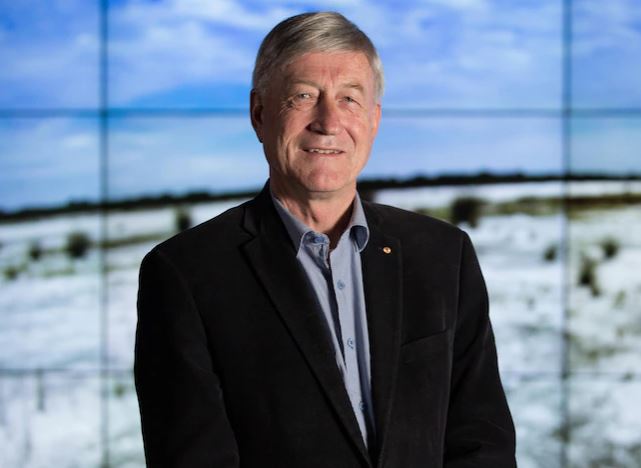Western Australia -Mesrena Elyoum

A giant green energy project on Western Australia’s south coast that dwarfs the world’s largest hybrid energy operation will have the capacity to produce the equivalent of enough power for the entire country, says one of the nation’s leading scientists and sustainability experts.
And WA’s Hydrogen Minister Alannah MacTiernan says that, while it is early days, the Western Green Energy Hub plan holds the promise of a major opportunity for the state, and Australia, to develop a “more ambitious strategy” than producing and exporting iron ore and gas.
Curtin University professor of sustainability Peter Newman said the development, extending inland from the Great Australian Bight near Esperance, could produce up to 50 gigawatts of green energy, a capacity about 12 times the size of the current West Australian power grid.
“We have the sun, the space, the investment climate and with the opportunity that’s provided for the Indigenous people to be part of this, I think it ticks all the boxes,” he said.
The proposal, revealed on Tuesday, is to create a 15,000-square-kilometre wind-and-solar energy hub on traditional land on the western edge of the Bight and extending inland towards Norseman.
The largest renewable energy project in the world now is a 736-square-kilometre hybrid energy park in India.
The group behind the proposal, including Intercontinental Energy and CWP Global, says the hub will produce 3.5 million tonnes of zero carbon green hydrogen, or 20 million tons of green ammonia, each year for domestic consumption and export.
The green hydrogen market is expected to be worth US$2.5 trillion by 2050.
Hydrogen and ammonia game changers
Professor Newman said the proposed “hub” on the West Australian side of the Nullarbor Plain would produce power equivalent to Australia’s entire current energy capacity.
But the former WA Scientist of the Year said the power wouldn’t be fed directly into the grid.
“The power is going to be making hydrogen and ammonia which are desperately needed to help heavy transport, the big trucks the big trains, ships and planes,” he said.
Professor Newman said while ammonia was emerging as the solution to making heavy transport greener, hydrogen would be used for processing minerals, an energy intensive practice that relied on fossil fuel.
“The reality is that we’re using a lot of diesel and a lot of gas to process these products, and hydrogen does it all,” he said.
“We can actually process our minerals here. We’ve got the minerals, so we’ve got the opportunity to process stuff here and that’s the real breakthrough.”
Professor Newman said a similar project proposed for the Kimberley was knocked back due to concerns it would impact the local environment.
But he said he was more optimistic that this proposal would come to fruition.
“I think solar and wind are already things that work out in that area,” he said.
“We know that this can be the start of something. I think it’ll get there but you’re talking a couple of years.”
State keen on green hydrogen wave
Ms MacTiernan told the ABC the project was an opportunity to take advantage of growing demand for green hydrogen.
“These major corporates absolutely understand the writing is on the wall,” Ms MacTiernan said.
“If they want to have a business in 20 years’ time, they’ve got to transition from fossil fuels into these renewable fuels and of course hydrogen is a magnificent medium for storing renewable power.”
The minister said project meant new infrastructure for the region was on the cards, but “they’re not going to be going out there with the digger next week”.
“This is now the beginning of the very detailed work that needs to be undertaken to ensure that this is a viable project,” she said.
Ms MacTiernan said she wanted the state government to think beyond the production and export approach taken in the iron ore and natural gas booms.
“We want to see both upstream and downstream processing (of hydrogen),” she said.
“We want to be involved in the manufacturing of the electrolysers, the membranes that are used in the production of the hydrogen, and at the other end we want to use the cheap energy that will eventually emerge.”
A spokesman for federal Environment Minister Sussan said the department would look closely at the project and “streamline the state and Australian government process where possible”.
“If the proposed Western Green Energy Hub has the potential to have a significant impact on matters of national environmental significance, it will need to be referred for assessment,” the spokesman said.
The Minister for Energy and Emissions Reduction, Angus Taylor, was not available for comment.

